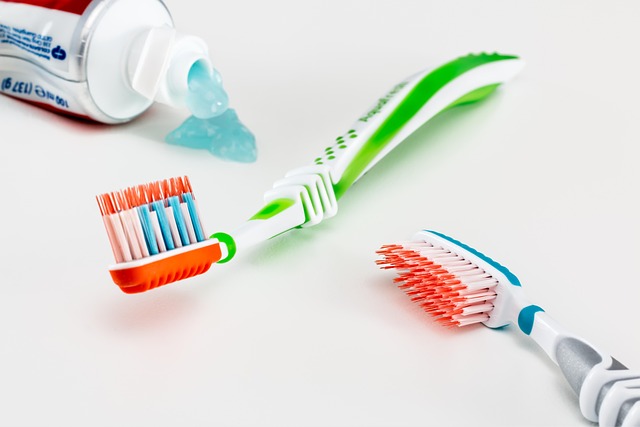Internal linking for SEO tools enhance website visibility and performance by connecting relevant pages, improving user experience and search engine authority. These tools simplify structure creation, offer insights into link metrics, drive organic traffic, boost engagement, and increase website authority. Effective use of internal linking tools optimizes site navigation, improves user experience, fosters better internal communication, and strengthens online presence. Best practices include using keyword-rich anchor text, balanced link distribution, contextual linking, and regular updates to fix broken links. Measuring success through key metrics helps optimize internal linking for enhanced SEO tool performance.
In today’s digital landscape, effective internal linking is a game-changer for search engine optimization (SEO). This article explores the power of an advanced SEO tool designed specifically for internal linking, helping you harness its potential. We’ll guide you through understanding the fundamentals of internal linking, its key benefits, and how to optimize landing pages with ease. Discover how this tool streamlines your SEO strategy, offering seamless integration and best practices for measurable success in boosting your website’s performance.
- Understanding Internal Linking for SEO Tool Optimization
- Key Benefits of Utilizing This SEO Tool for Internal Links
- Crafting Effective Landing Pages with Internal Linking Tools
- Integrating SEO Tool Features for Seamless Internal Linking
- Best Practices for Optimizing Internal Links Using This Tool
- Measuring Success: Tracking Internal Linking Performance
Understanding Internal Linking for SEO Tool Optimization

Internal linking is a powerful strategy to enhance your website’s visibility and performance in search engine results. When optimizing your site with an SEO tool, understanding internal linking plays a pivotal role. It involves creating connections between relevant pages within your website, which not only improves user experience but also boosts your site’s authority in the eyes of search engines. By strategically placing links to essential pages, you can guide users and search algorithms alike, allowing them to discover valuable content easily.
This technique is particularly beneficial for SEO tool optimization as it helps distribute link equity across your website. When you implement internal linking for SEO tips, you ensure that every page has a chance to contribute to the overall ranking potential. Additionally, it can improve site navigation, reduce bounce rates, and encourage users to explore more of your content, resulting in better engagement metrics—a crucial aspect of internal linking for SEO optimization.
Key Benefits of Utilizing This SEO Tool for Internal Links

The benefits of leveraging an SEO tool for internal linking are numerous and can significantly enhance your website’s overall search engine optimization (SEO) strategy. Firstly, it simplifies the process of creating a robust internal linking structure by providing intuitive interfaces and user-friendly features. This ensures that each page on your site is interconnected, allowing users to navigate seamlessly while also improving crawlability for search engines.
Moreover, such tools offer valuable insights into link metrics, helping you identify high-value pages and strategic anchor text options. By optimizing internal linking for SEO, these tools can drive more organic traffic to crucial pages, boost user engagement, and ultimately enhance your site’s authority and visibility in search results. This is particularly beneficial when implementing SEO tips for internal linking as part of a comprehensive SEO strategy.
Crafting Effective Landing Pages with Internal Linking Tools

Crafting effective landing pages is crucial for any digital marketing strategy, and leveraging internal linking tools can significantly enhance your SEO efforts. By integrating these tools into your website’s architecture, you create a seamless user experience while boosting search engine visibility. One of the primary benefits of internal linking for SEO tips is improving site navigation, ensuring visitors can easily explore relevant content. This strategic approach not only satisfies user intent but also allows search engines to crawl and index your pages more efficiently.
For optimal results in internal linking for SEO strategy, consider a well-planned network of interlinking pages. This involves identifying key topics and placing strategically placed anchor text links within compelling copy. When done right, it signals to search algorithms that your content is interconnected and valuable, fostering better internal communication. As you implement these strategies, remember that internal linking for SEO optimization goes beyond simple link placement; it’s about creating a coherent digital experience that keeps visitors engaged and encourages them to delve deeper into your website.
Integrating SEO Tool Features for Seamless Internal Linking

Integrating SEO tool features for seamless internal linking is a game-changer for any website aiming to boost its online visibility. These tools offer a suite of features designed to simplify and optimize the process, ensuring every link within your site works hard for your SEO efforts. One key aspect is automated suggestion algorithms that pinpoint relevant pages for internal links based on content similarity and user behavior, aligning perfectly with best practices for effective internal linking.
By utilizing these tools, you can implement strategic internal linking for SEO tips and tutorials without the need for manual sitemaps or extensive research. This not only saves time but also ensures your website’s architecture is optimized for both users and search engines. For instance, an SEO-focused tool might highlight key topics within your content, suggesting internal links to relevant pages that enhance user experience and encourage deeper engagement, ultimately contributing to a stronger online presence.
Best Practices for Optimizing Internal Links Using This Tool

To maximize the benefits of our internal linking for SEO tool, consider these best practices. Firstly, leverage keyword-rich anchor text that accurately represents the linked page’s content. This practice improves user experience and signals search engines about the relevance of the destination pages. Secondly, ensure a balanced distribution of internal links across your website; this diversifies link equity and enhances the overall authority of your site.
Additionally, focus on contextual internal linking, where links are placed within relevant content. This strategy increases click-through rates and improves user engagement. Also, remember to update internal links periodically to keep them functional and relevant. Broken links negatively impact user experience and SEO efforts, so regularly auditing and repairing these issues is crucial for optimal internal linking for SEO optimization.
Measuring Success: Tracking Internal Linking Performance

Measuring success is a pivotal step in understanding the impact and effectiveness of your internal linking strategy. Using an internal linking for SEO tool allows you to track key performance indicators (KPIs) that demonstrate how well your site’s structure is supporting search engine optimization (SEO). These tools can monitor click-through rates (CTRs) from internal links, providing insights into which pages are most engaging and user-friendly. By analyzing these data points, you can identify content gaps and optimize your internal linking for SEO optimization to create a more coherent and valuable site architecture.
Furthermore, tracking bounce rates associated with internal links offers a glimpse into user behavior and satisfaction. If visitors are leaving specific pages immediately after clicking an internal link, it might indicate that the linked content doesn’t meet their expectations. This information is crucial for refining your internal linking for SEO strategy to ensure each link directs users to relevant, high-quality content, thereby improving overall site performance and user experience.
